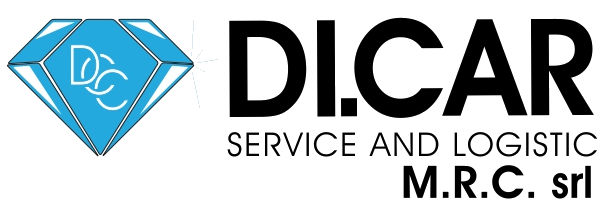A gateway to deep liquidity in Asian NDF markets
Settembre 18, 2023Content
- A gateway to deep liquidity in Asian NDF markets
- Offshore Currency Markets: Non-Deliverable Forwards (NDFs) in Asia
- NDF Matching builds on the strengths of Matching with the addition of enhanced clearing capabilities
- Trade credit behavior of Korean small and medium sized enterprises during the 1997 financial crisis
Other emerging market fixed income derivatives, such as interest rate swaps, implemented trading rules in 2013, meaning these markets have already suffered through the growing pains necessary for regulators and the industry to coalesce around market standards. Investors therefore could be lulled into thinking these reforms were also completed for NDFs, but the journey is just beginning for those instruments. The quality of execution in NDFs, however, depends on investors understanding of the obstacles along the journey. A non-deliverable forward (NDF) is a straight futures or forward contract, where, much like a non-deliverable swap (NDS), the parties involved establish a settlement between the leading spot rate and the contracted NDF rate. NDF is a notional forward transaction as there ndf trading will be no physical settlement of principal. At maturity, the difference between the contracted forward rate and the fixing spot rate is settled in US dollar.
A gateway to deep liquidity in Asian NDF markets
With LCH ForexClear acting as the Central Counterparty (CCP), it removes the necessity to have a centralised or bilateral credit model. The largest NDF markets are in the Chinese yuan, Indian rupee, South Korean won, New Taiwan dollar, Brazilian real, and Russian ruble. The largest segment of NDF trading takes place in London, with active markets also in New York, Singapore, and Hong Kong. The update frequency for each currency and https://www.xcritical.com/ tenor will depend on market liquidity. The data is represented in one-second time-slices for Tick and Level 1 files.
Offshore Currency Markets: Non-Deliverable Forwards (NDFs) in Asia
If the rate increased to 6.5, the yuan has decreased in value (U.S. dollar increase), so the party who bought U.S. dollars is owed money. NDFs are traded over-the-counter (OTC) and commonly quoted for time periods from one month up to one year. They are most frequently quoted and settled in U.S. dollars and have become a popular instrument since the 1990s for corporations seeking to hedge exposure to illiquid currencies. China’s interbank foreign exchange platform is planning to add new execution functionalities for Chinese banks participating in its recently launched non-deliverable forwards (NDF) trading programme. If the rate increased to 7.1, the yuan has decreased in value (U.S. dollar increase), so the party who bought U.S. dollars is owed money. If in one month the rate is 6.9, the yuan has increased in value relative to the U.S. dollar.
NDF Matching builds on the strengths of Matching with the addition of enhanced clearing capabilities
However, the two parties can settle the NDF by converting all profits and losses on the contract to a freely traded currency. They can then pay each other the profits/losses in that freely traded currency. The historical data is created on a time-slice basis and includes price records and deal records.
This fixing is a standard market rate set on the fixing date, which in the case of most currencies is two days before the forward value date. We believe that a fully cleared venue for NDFs will open up the opportunity for more participants to access the venue. A more diverse range of participants will change the liquidity profile and have a positive impact on the market, benefiting not just our customers but the market as a whole. Foreign exchange options can carry a high degree of risk and are not suitable for everyone as they can have a negative impact on your capital. If you are in doubt as to the suitability of any foreign exchange product, SCOL strongly encourages you to seek independent advice from suitable financial advisers.
The contracts for periods from one month to one year are used the most often. FXall is the flexible electronic trading platform that delivers choice, agility, efficiency and confidence that traders want, across liquidity access to straight-through processing. The launch of NDF Matching brings together the benefits of an NDF central limit order book and clearing to offer a unique solution for the global foreign exchange market. Benefit from counterparty diversity and reduced complexity as you execute your NDF foreign exchange requirements. A non-deliverable forward (NDF) is usually executed offshore, meaning outside the home market of the illiquid or untraded currency. For example, if a country’s currency is restricted from moving offshore, it won’t be possible to settle the transaction in that currency with someone outside the restricted country.
The fixing date is the date at which the difference between the prevailing spot market rate and the agreed-upon rate is calculated. The settlement date is the date by which the payment of the difference is due to the party receiving payment. The basis of the fixing varies from currency to currency, but can be either an official exchange rate set by the country’s central bank or other authority, or an average of interbank prices at a specified time.
Other popular markets are Chilean peso, Columbian peso, Indonesian rupiah, Malaysian ringgit, Philippine peso, and New Taiwan dollar. From 60% to 80% of non-deliverable forwards are used for speculating and only the rest of them -for hedging against the risks and exchange arbitrage. FX Aggregator is reliable and cost-efficient, giving you seamless execution to the deepest market liquidity pools. For more information on how LSEG uses your data, see our Privacy Statement.
- Gain unlimited access to more than 250 productivity Templates, CFI’s full course catalog and accredited Certification Programs, hundreds of resources, expert reviews and support, the chance to work with real-world finance and research tools, and more.
- For this right, a premium is paid to the seller, which will vary depending on the notional amount of contract purchased.
- NDFs are typically quoted with the USD as the reference currency, and the settlement amount is also in USD.
- Any changes in exchange rates and interest rates may have an adverse effect on the value, price or structure of these instruments.
- The largest NDF markets are in the Chinese yuan, Indian rupee, South Korean won, Taiwan dollar, and Brazilian real.
The price records list the NDF prices at the end of the time-slice and the deal records list the highest paid and lowest given deal prices during the time-slice. NDF (non-deliverable forward) is a financial instrument when two contracting partners agree on supplying the difference between the spot rate and forward rate. The integration of clearing into NDF Matching enables easier access to the full book of liquidity in the venue for all participants and better transparency of the market. Cleared settlement brings innovation to the FX market, including simplified credit management, lower costs, and easier adoption by non-bank participants. The borrower could, in theory, enter into NDF contracts directly and borrow in dollars separately and achieve the same result. NDF counterparties, however, may prefer to work with a limited range of entities (such as those with a minimum credit rating).
For example, the borrower wants dollars but wants to make repayments in euros. So, the borrower receives a dollar sum and repayments will still be calculated in dollars, but payment will be made in euros, using the current exchange rate at time of repayment. The more active banks quote NDFs from between one month to one year, although some would quote up to two years upon request. The most commonly traded NDF tenors are IMM dates, but banks also offer odd-dated NDFs. NDFs are typically quoted with the USD as the reference currency, and the settlement amount is also in USD. If in one month the rate is 6.3, the yuan has increased in value relative to the U.S. dollar.
All NDF contracts set out the currency pair, notional amount, fixing date, settlement date, and NDF rate, and stipulate that the prevailing spot rate on the fixing date be used to conclude the transaction. The technology available across SGX FX is market leading and allows clients to access the deepest streaming liquidity in the NDF market. Clients can deal in an OTC manner bilaterally which could be anything from trading a risk price to launching a complex order or transacting on a liquidity provider’s NDF algo suite. Alongside this is the innovative SGX CurrencyNode which is a Recognised Market Operator by the Monetary Authority of Singapore. CFTC which allows BidFX to onboard eligible U.S. market participants who can then seamlessly trade NDFs.
Rather than delivering in the underlying pair of currencies, the contract is settled by making a net payment in a convertible currency, proportional to the difference between the agreed forward exchange rate and the subsequently realized spot fixing. Much like a Forward Contract, a Non-Deliverable Forward lets you lock in an exchange rate for a period of time. However, instead of delivering the currency at the end of the contract, the difference between the NDF rate and the fixing rate is settled in cash between the two parties. A desire for real-time price discovery coupled with the advent of algorithmic execution in the NDF market is driving increased demand for streaming prices.
The contract is settled in a widely traded currency, such as the US dollar, rather than the original currency. NDFs are primarily used for hedging or speculating in currencies with trade restrictions, such as China’s yuan or India’s rupee. The electronification and central clearing of emerging market NDFs has been made more complicated by two significantly different interpretations of the electronic trading regulations. Under Dodd-Frank, standard emerging market currency forwards were exempt from these regulations — so the larger foreign exchange market has not previously encountered these issues.
Upgrading to a paid membership gives you access to our extensive collection of plug-and-play Templates designed to power your performance—as well as CFI’s full course catalog and accredited Certification Programs. SCOL shall not be responsible for any loss arising from entering into an option contract based on this material. SCOL makes every reasonable effort to ensure that this information is accurate and complete but assumes no responsibility for and gives no warranty with regard to the same.
Some nations choose to protect their currency by disallowing trading on the international foreign exchange market, typically to prevent exchange rate volatility. Market participants can use non-deliverable forwards (“NDFs”) to transact in these non-convertible currencies. In this course, we will discuss how traders may use NDFs to manage and hedge against foreign exchange exposure. We will also take a look at various product structures, such as par forwards and historic rate rollovers. Lastly, we will outline several ways to negate or cancel an existing forward position that is no longer needed.
For normal corporate client for non-trade related, client can use CNH offshore spot contract for RMB FX exchange. Please contact customer services – www.fx-markets.com/static/contact-us to find out more. If one party agrees to buy Chinese yuan (sell dollars), and the other agrees to buy U.S. dollars (sell yuan), then there is potential for a non-deliverable forward between the two parties. NDFs are distinct from deliverable forwards in that they trade outside the direct jurisdiction of the authorities of the corresponding currencies and their pricing need not be constrained by domestic interest rates.
Singapore is quickly becoming the hub for Asian trading and the growth of Euronext Markets Singapore NDF volumes are in line with increasing global eFX volumes in the region. Early 2024, we expanded our NDF offering to LD4 and with the option to trade Latin American pairs. FX NDF clients can access diverse pools of both global and local niche liquidity providers with reduced latency.
This is useful when dealing with non-convertible currencies or currencies with trading restrictions. There are also active markets using the euro, the Japanese yen and, to a lesser extent, the British pound and the Swiss franc. EOM tenors will be listed as “EOM MMM YY” with MMM as the 3-character month code and YY as the 2-digit year. Our Trade Notification reporting tool covers all major message formats and every key instrument and allows you to connect with counterparties globally. Automate middle- and back-office trade processing with SWIFT confirmation messages, trade matching, settlement instructions, trade netting, third-party notifications, trade receipt splitting, and more.
A settled forward contract is a short-term off-exchange instrument when two contracting partners agree on delivering the difference between spot rate and forward rate. Under such an arrangement, settlement risk is minimized to that of the rate differences. It can arose during the period between the agreement and the delivery dates. Consequently, since NDF is a “non-cash”, off-balance-sheet item and since the principal sums do not move, NDF bears much lower counter-party risk. NDFs are committed short-term instruments; both counterparties are committed and are obliged to honor the deal. Nevertheless, either counterparty can cancel an existing contract by entering into another offsetting deal at the prevailing market rate.





